Hello all,
Today I would like to talk about the south-central Boiko costume, which is found in Transcarpathia around the town of Volovets', and also over the line into L'viw Oblast in the villages of Volosianka, Oporets', and possibly as far north as Tukhol'ka. Here is an approximate map of this region. It may possibly extend further to the southeast, but I do not have much information on that region.
This costume seems to have come in three variants, but they are very similar.
The woman's chemise is similar to that of the Lyuta region, the front being completely smocked and the opening being on the side.
The original colors of the embroidery were originally red and blue, but the range of colors has since increased.
The cuffs were either sewn on, with the sleeve ends smocked into them, or formed by smocking the sleeves themselves.
The skirts were typically Boiko, being of linen smocked into the waistband and having embroidery near the hem.
I assume that the apron was also originally embroidered linen, but I have no images of that. The aprons which I have images of are made of bought cloth of different kinds, sometimes with ornament of ribbon, etc.
The chepets of this region is quite unique, consisting of a ring with a sprang top which seems to consist of a tube that is folded to the rear, with decorative ribbons hanging behind. Here is an example from Volovets'.
This image is of a woman from Volosianka, in L'viw Oblast. Here is a closer look at her chepets.
And a side view.
Here is an image from the village of Oporets', with an unmarried girl on the left, and a married woman wearing this chepets on the right. They are both wearing embroidered linen aprons.
The western variant of this costume was found around the towns of Nyzhni and Verkhni Vorota. The geometric embroidery was replaced by floral designs, somewhat like that of the Lyuta region, and they developed a linen vest which also had embroidery.
In the immediate Volovets' region, the embroidery was found in many colors and the aprons were quite large.
The men also seem to have worn the fitted semi urban jacket in this area, along with vests of cloth or sheepskin. The Hunia was also worn.
One thing we can notice about this costume is the fitted vest with embroidery, and the trim around the edge dyed in various colors. Here are a couple images from K. I. Matejko's book 'Ukrajins'kyj Narodnyj Odiah'.
I had always assumed that these vests were of sheepskin, but a close look at this one shows that it was made of woven wool.
However, we do see some images from the western Boikos which show embroidered epaulets, without the smocking. Take a look at the boy in the foreground.
Both clearly have embroidery placed vertically on the shoulders, So this is not just found in Volosianka, although the fronts of the shirts are made differently.














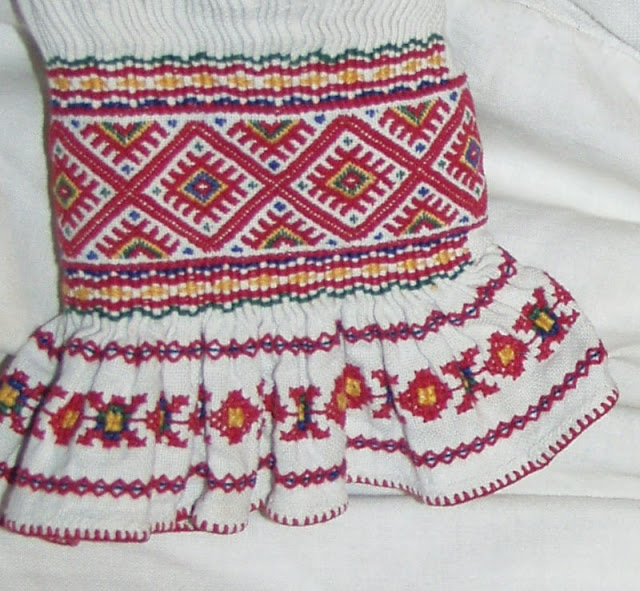






















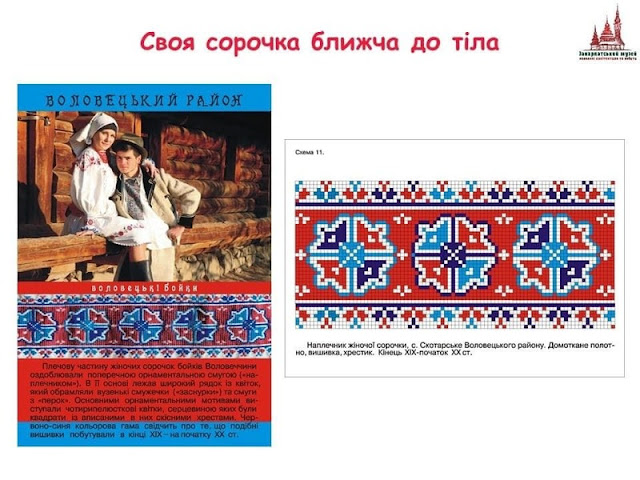


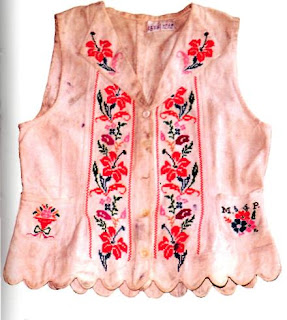





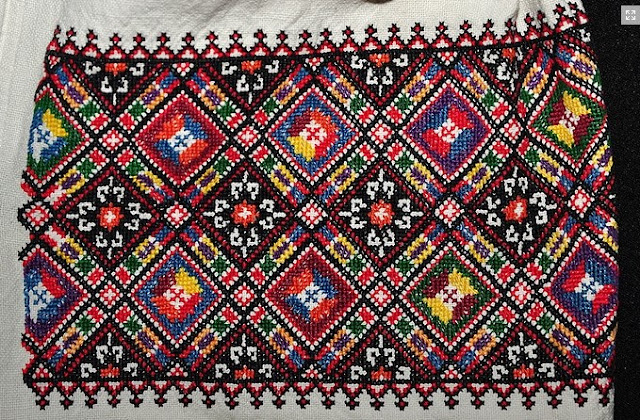



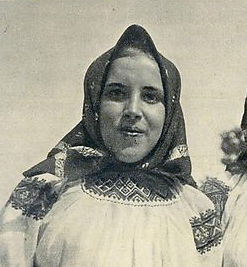


















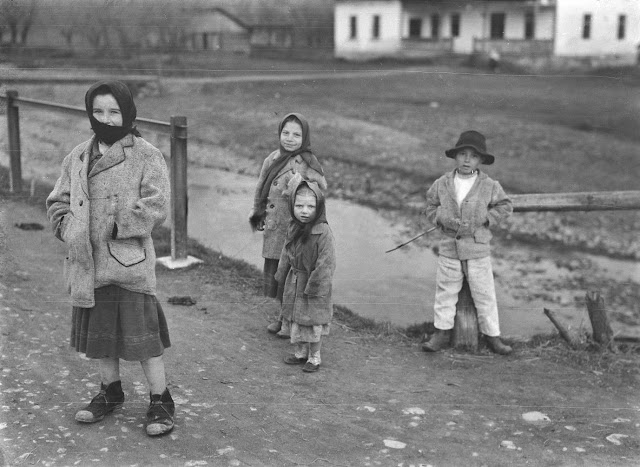






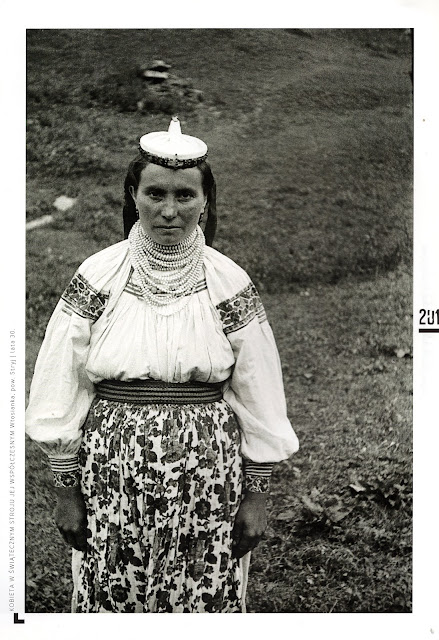







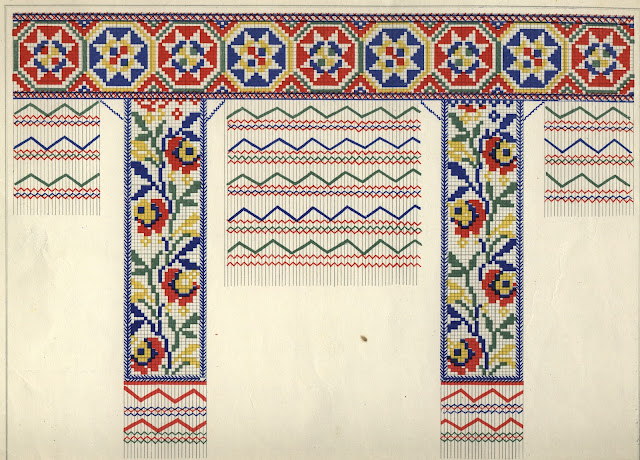








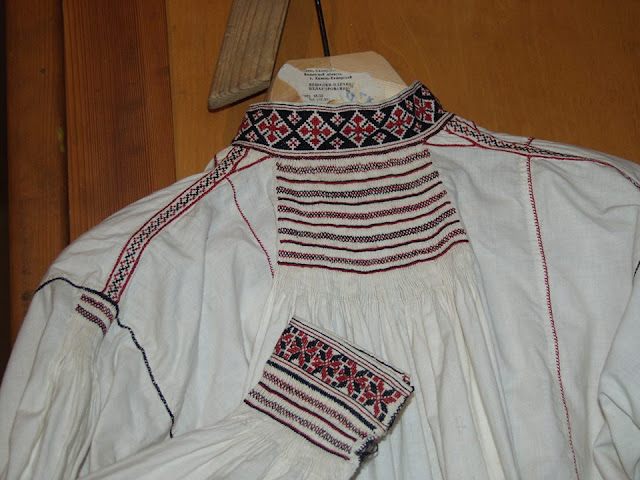





Those headpieces! <3
ReplyDeleteCongratulations for this great blog!
ReplyDeleteMaybe you could also write a post (or some posts) about the adornments of Ukrainians. I think there is a great variety: Murano beads, salby, gerdans, dukaty, corals, balamuty, shell necklaces and so on; especially by Hutsuls and in Bukovina and Western Podillia/Eastern Galicia, I think there are plenty of such adornments.
I would like to know where all these came from, the influences and the costs of such adornments in those times. Maybe there are some books on the issue, as well?
Thank you!
Please let me know if you have any recommended books for Boiko's embroidery.
ReplyDelete